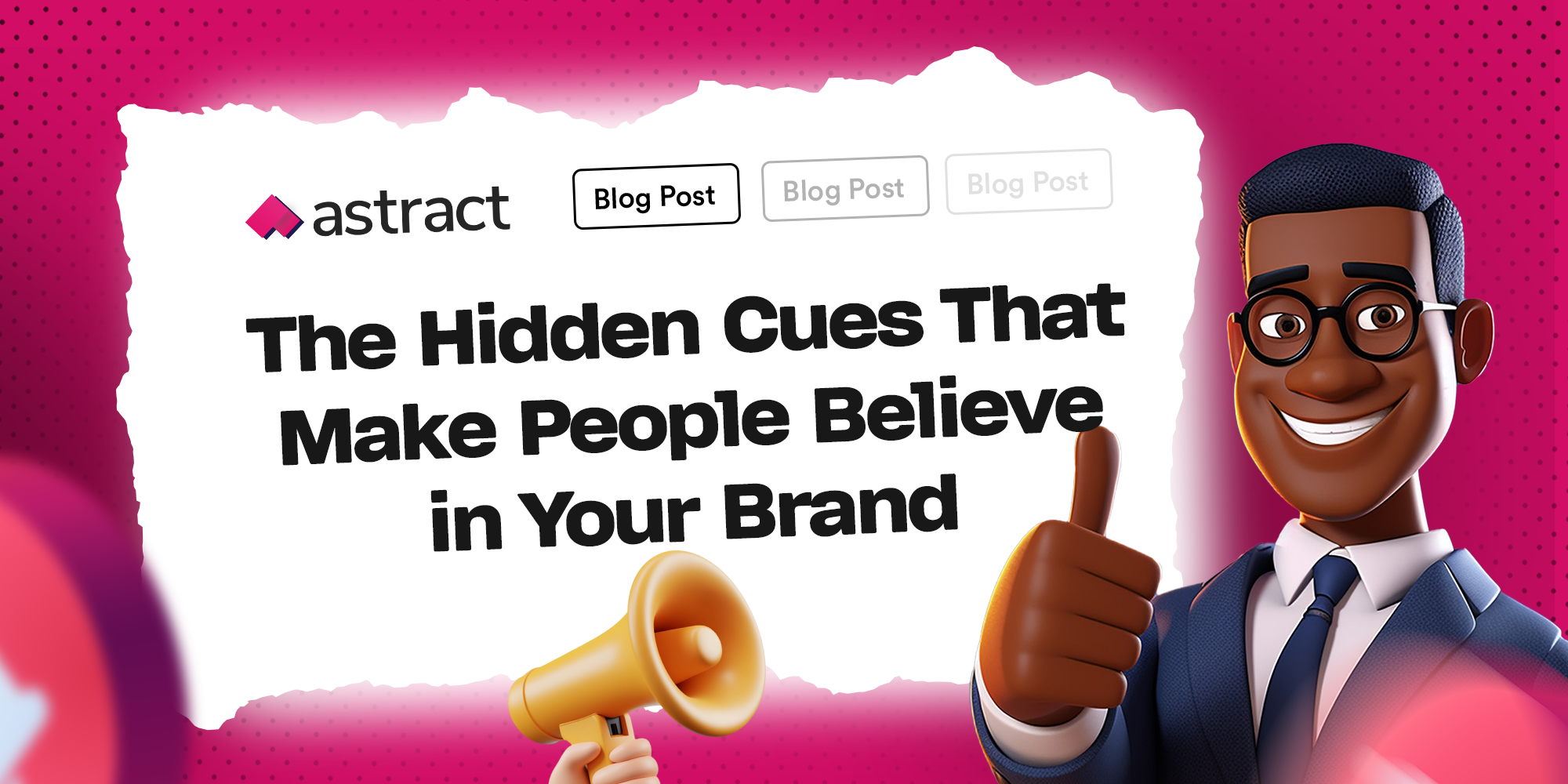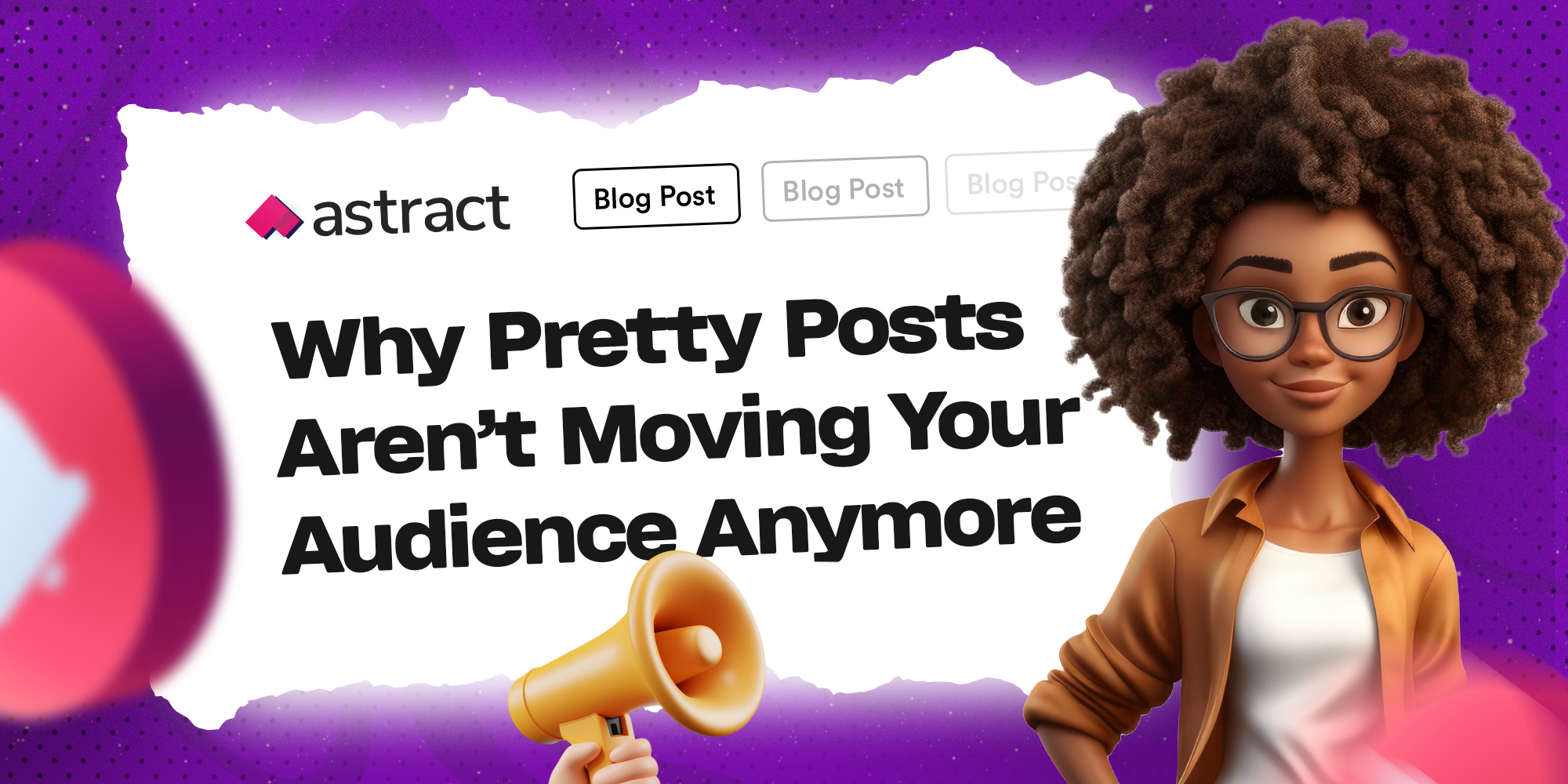AI-powered Search Generative Experience (SGE), also known as AI overview, is currently shaking things up on Google Search pages. These AI-generated overviews are little summaries with concise answers right at the top of Google search result pages, and studies show that this change could reduce organic traffic by 18-64%.
No need to click, no need to scroll through a list of website links; just instant information. This Google update does sound cool, but it also means that traditional search rankings, website traffic, and even paid ads will be affected. In this guide, I’ll explain what’s happening, what it means for your business, and, more importantly, how to stay visible in an AI-powered search landscape.

What Is Google’s AI Search Update?
Google’s Search Generative Experience (SGE), or AI Overviews, is an experimental feature that uses artificial intelligence to generate direct answers to complex or broad search queries. Instead of traditional links, SGE compiles AI-generated summaries from multiple sources, allowing users to access critical information at a glance. No need to click through websites. Google AI search results aim to help people find relevant answers faster and better, especially on broad topics or questions.
Why It Matters:
While SGE streamlines search, it risks reducing traffic to source websites. Only 7.6% of Google searches currently trigger AI Overviews, but there is a worry that searchers may rely on these results packaged by Google rather than clicking through to the source websites. On the bright side, Google says it’s still focused on driving traffic to websites and keeping search ads as part of SGE.
But will AI-generated responses reduce site clicks?
How will search ads perform on SGE pages?
These are some of the questions this article explores for marketers and businesses of all sizes.
What Makes Up Google’s Search Generative Experience?
The major features of AI Overviews are:
1. AI-Generated Summaries: Answers appear at the top of search results, pushing organic links further down.
2. Multi-Source Synthesis: Pulls data from diverse sources to create comprehensive responses (e.g., comparing Bryce Canyon vs. Arches National Park for family trips). It also includes links to resources that explore the topic further.
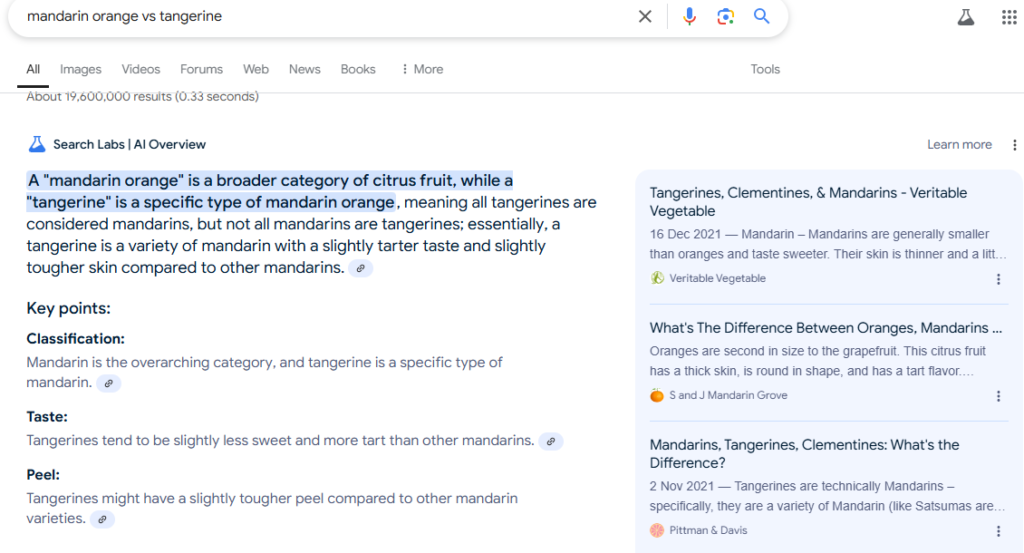

3. Enhanced Local & Commercial Results:
Some of the content most likely to trigger AI overviews include:
- Complex or Comparative Queries: (e.g., “Top SEO Tips,” “Is Santorini or the Maldives better for a romantic getaway?”).
- Local SEO or “Near Me” Searches: While there is already a map, SGE combines map packs with AI Overviews, including reviews and detailed suggestions.
- Transactional Queries: This section displays buyer guides, product carousels, and price comparisons (e.g., “best tripod stand”).
- Informational Queries: Answers questions like “Fun things to do in Santorini” and allows follow-up questions (e.g., “Show only outdoor adventures).
- Native Ads: Google ensures search ads remain integrated into SGE results.
Limitations: Content Less Likely to Appear in AI Overviews:
Not all searches are impacted by SGE, and certain queries won’t appear on Google AI overview. Some of them include:
– Sensitive Topics (YMYL): Finance, health, or deeply personal queries.
– Recipes/News/Events: Google prioritizes direct sources (e.g., food blogs, news sites).
– Divisive or Harmful Topics: Politics, war, and other high-risk subjects are excluded.
– Quick Answers: Simple queries (e.g., weather, sports scores) remain in traditional “featured snippets.”
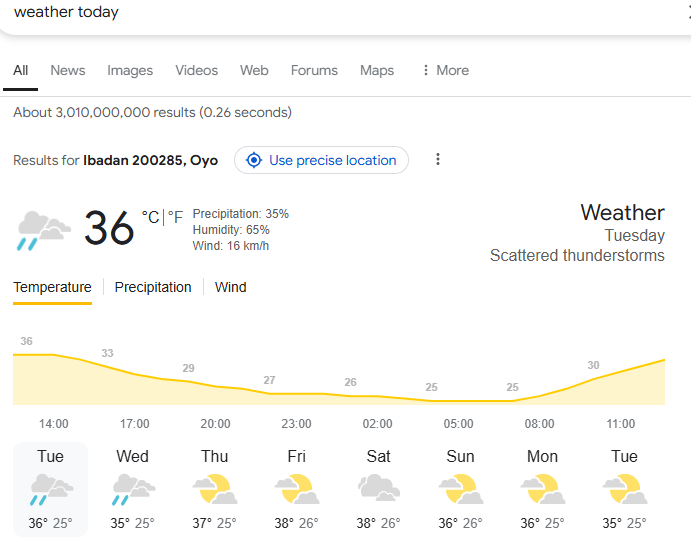
What Does AI Overview Mean for Content, Clicks, and Paid Ads?
With Google’s AI search update transforming how businesses appear in search results, content marketing, paid advertising, and digital strategies must also evolve. Here’s what you need to know about how AI-Powered Search Changes SEO in 2025
1. Less Organic Traffic for Websites
The whole point of having a website is to get people to visit and also consume your content. With AI overviews, this has become even more difficult because users don’t need to visit your website to get the information they’re looking for.
Traditionally, ranking on Google meant people clicked on your link to find answers. The new SERP interface prioritizes AI-generated responses, meaning many users will get their answers without leaving the search page, meaning fewer clicks to your website. Early testing shows that Google’s AI could lead to up to a 64% decrease in organic traffic for some websites, especially for generic and informational-type search queries.
2. Keywords Alone Won’t Be Enough
In traditional SEO, targeting specific keywords was the strategy. With the new Search Generative Experience, Google focuses more on search intent and EAAT signals rather than just matching keywords.
Google’s AI pulls data from trusted and credible sources so authoritative, well-researched, high-quality content will rank higher than ever.
Meanwhile, Local keywords are less likely to trigger AI Overviews. So, if you’re a local business targeting terms like ‘Best restaurants in Ikeja’ or Digital marketing companies in Lagos, you are likely safe from AI Overviews.
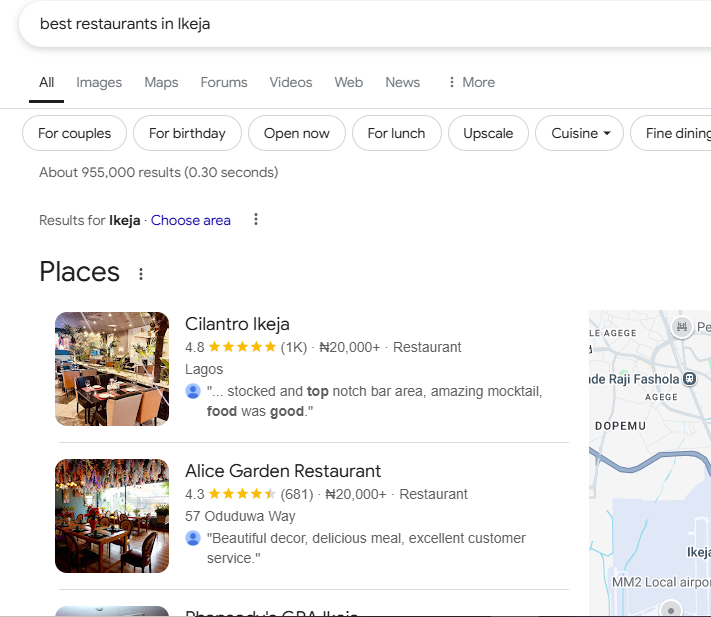
3. Paid Ads Will be Competitive
For now, Google Ads are not directly affected by the new AI Overview experience; Ads still appear above and below the AI Overview answer box. However, since AI-generated results may reduce organic clicks, businesses will likely increase ad spend to maintain visibility.
This means:
- Paid search ads will become even more competitive.
- There is less control over targeting due to AI-driven ad placements. This calls for the need to adopt new automation tools, targeting options, and ad formats.
How Small Businesses Can Adapt to AI-Driven Search
Now that we understand the impact of Google’s AI search update, the big question is: How can small businesses stay visible and continue driving traffic and sales?
Here are some actionable steps:
2. Focus on High-quality, Expert-Led Content
Google’s AI prioritizes expert sources when generating answers. This means thin, generic content won’t cut it anymore. Providing valuable, high-quality content should be a top priority, organic traffic or not.
Tips:
i. Create content AI can’t fully summarize. Instead of short, keyword-stuffed blog posts, Focus on longer, more in-depth content that AI can’t fully summarize. This includes
- Original case studies
- Industry insights and expert interviews
- Long-form, data-driven content that provides deeper analysis than AI can summarize.
iii. Answer multiple related questions in one post. AI may summarize one answer, but if your article covers more angles, users will click through for the full context.
iii. Optimize for Conversational and Intent-Based Search. AI-powered search prioritizes natural language queries over just keywords. People are searching the way they talk. Instead of “best website design agency,” they might ask, “Which web design agency specializes in e-commerce?” So;
- Use long-tail keywords that match real questions, customers
- Optimize for voice search (since AI is also used in voice assistants).
- Answer questions directly in your content to increase your chances of appearing in AI-generated responses.

3. Review Your SEO Practices
SEO in 2025 isn’t just about ranking, it’s about being included in AI-generated answers. You want your brand to still get recognized in AI summaries, so it’s important to optimize your content in a way AI can easily pull from.
Tips:
i. Optimize for AI-featured snapshots. You can ensure key points and direct answers are in bold headers, bullet points, and direct Q&A formats.
ii. Prioritize E-E-A-T (Experience, Expertise, Authoritativeness, Trustworthiness). Google favors brands that demonstrate expertise through high-quality content. For Example, instead of a basic “SEO tips for 2025” article, write “A Data-Backed Guide to SEO Trends in 2025 (With Case Studies).” AI will reference your insights instead of just summarizing generic SEO tips.
iii. Get backlinks from credible sources. Just like traditional Google Search, AI is more likely to reference you if trusted sites already do.
iv. Keep updating old content. AI prioritizes fresh information, so regular updates keep your content in the mix. For instance, you can update a blog post from 2022 on “Best Social Media Strategies” with 2025 trends, new tools, and AI-driven social media insights.
V. Use Google Business Profile (GBP). Use Google My Business and optimize for local search since AI-powered search prioritizes local results.
4. Structure your content for AI
Another essential strategy to thrive in the AI search-powered world is ensuring your content is structured for AI. If you aren’t already, you should start paying attention to how you structure your content, including schema markup, tags, headings, and bullet points. This makes your content more readable for AI. Schema markup and clear content organization help AI systems pull relevant information directly into search results, improving your chances of appearing in AI-generated snippets.
In summary, you should use;
- Structured content formats (FAQs, how-tos, data-backed guides) that AI can easily pull from.
- Clear subheadings (H2s & H3s)
- Direct answers in short paragraphs
- Lists, tables, and bullet points (AI prefers structured data)
5. Prioritize Engagement & Community Building
If AI-generated search results reduce website clicks, businesses need other ways to connect with their audience and expand engagement for those who land on your website.
Tips:
i. Build strong email lists so you can directly engage with customers.
ii. Grow a community on social media platforms like TikTok, YouTube, and Facebook, where AI search has less impact.
iii. Use interactive content (polls, videos, quizzes, live Q&As) to encourage direct engagement rather than relying solely on search traffic.

5. Invest in Video & Multimedia Content
AI-driven search doesn’t just pull from written content; it also prioritizes videos, podcasts, and images in search results.
Tips:
i. Create short-form video content (YouTube Shorts, Instagram Reels, TikTok) that answers common customer questions.
ii. Optimize videos with SEO-friendly titles, transcripts, and tags.
iii. Use AI-generated captions and subtitles to make content more accessible and search-friendly.
6. Keep an Eye on Paid Search & AI-Powered Ads
Some businesses may find organic traffic decreasing, meaning paid ads will become even more competitive. Also, the new AI-driven Google Ad placement has called for new automation tools, targeting options, and ad formats.
Tips:
i. Test new AI-powered ad formats. Google is rolling out new ad types that integrate AI-generated responses with ads, so it’s a good idea to start testing them.
ii. Ensure ad copy is conversational and human-like, as AI search favors natural language.
iii. Focus on conversion-optimized campaigns. With less organic traffic, every paid click needs to count. Prioritize high-intent keywords.
iv. Leverage AI-enhanced audience targeting. Google’s AI can predict user intent more accurately, so use it to your advantage. Focus on high-intent audiences rather than just broad targeting. Instead of broad keyword targeting like “website design services,” try AI-powered audience segmentation to reach users who just searched for website design pricing or reviews.
Related Read>>> 5 SEO Trends for 2025: Top Strategies to Watch and Implement
Final Thoughts
AI-powered search isn’t a passing trend—it’s here to stay. Businesses must adapt their SEO and marketing strategies to generate traffic and stay ahead of the competition. This includes:
- Creating AI-friendly content (local details, structured data, and multi-angle answers).
- Focusing on high-value content that AI can’t fully replace
- Testing and refining AI-driven paid ad strategies
- Diversifying marketing beyond Google, building direct engagement via email, social media, and video.
Google Search Generative Experience is a relatively new feature, and it’s still in its beta testing stage, which means there are still some things we do not know about it. However, one thing remains certain: there is always going to be a way to generate traffic and grow your business, AI overview or not. The most important thing is to keep up with these changes and re-strategize accordingly.



